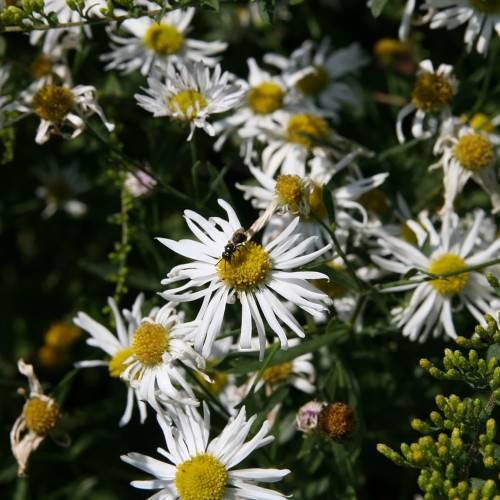
Aster Like Boltonia
Boltonia asteroides var. recognita
Also Known As - False Aster,White Doll's DaisyWatering:
Minimal
Hardiness Zone:
Sun:
full sun,part shade
Growth Rate:
Low
Drought Tolerant:
Yes
Salt Tolerant:
Yes
watering
New England Bulrush should be watered twice a week with approximately 1/4 to 1/2 inch of water. Watering should be done close to or at ground level, ensuring that the water reaches the roots and the base of the plant first before moistening the leaves. Make sure that soil is moist but not soggy; if puddles form on the surface, reduce the amount of water applied or increase the time between waterings. For best results, water should be done in the morning.
sunlight
New England Bulrush grows best in full sun; however, it requires at least 6 hours of direct sun for optimal growth and flowering. During hot summer months, partial shade during the hottest part of the day may help reduce heat stress. The species thrives in moist, yet well-drained soils, preferring loam or sandy soils. However, it can tolerate wetter soils and can even be grown in shallow standing water. Growth is best in soils with a pH of 5.5 to 7.0.
pruning
The New England Bulrush should be pruned in autumn or winter, when it is dormant, for best results. When pruning, remove any dead, diseased, or damaged shoots, then trim any shoots that are growing outside the specified area, as well as any shoots that are growing in an undesirable shape. It is also helpful to remove any excess foliage to allow more light and air to reach the inner shoots. Pruning should be done fairly lightly and should not remove more than 1-third of the total foliage of the plant. By pruning lightly, it is possible to keep the overall shape and health of the plant without sacrificing too much growth.
